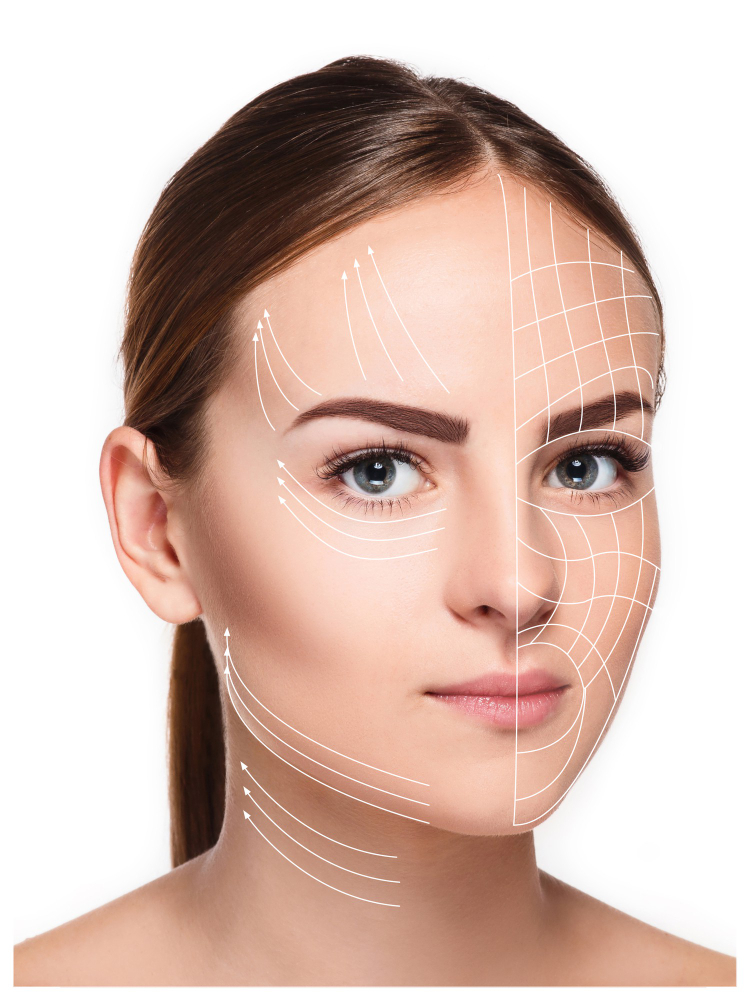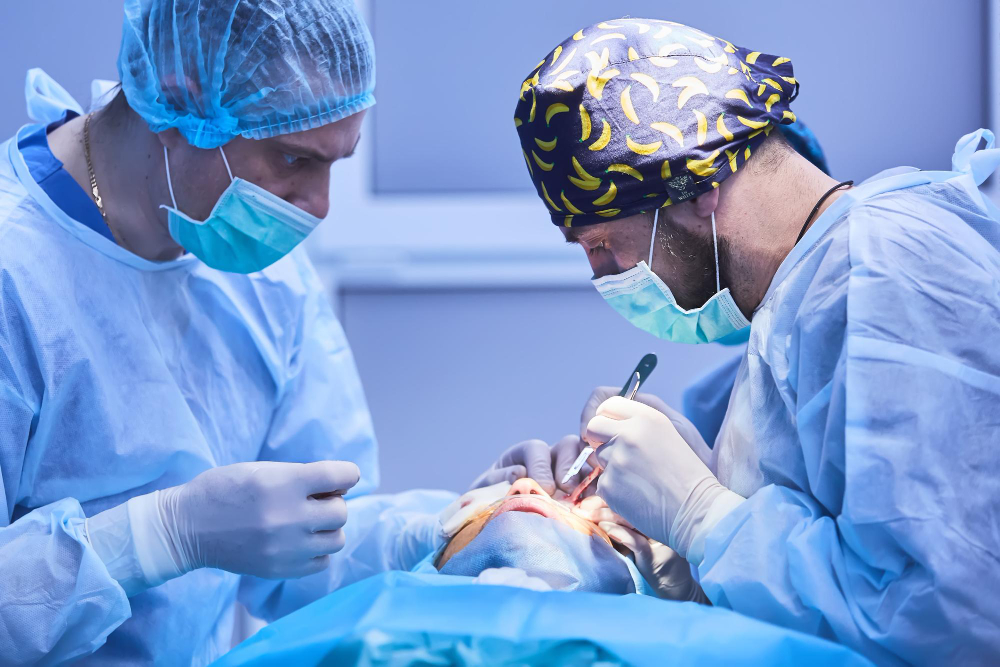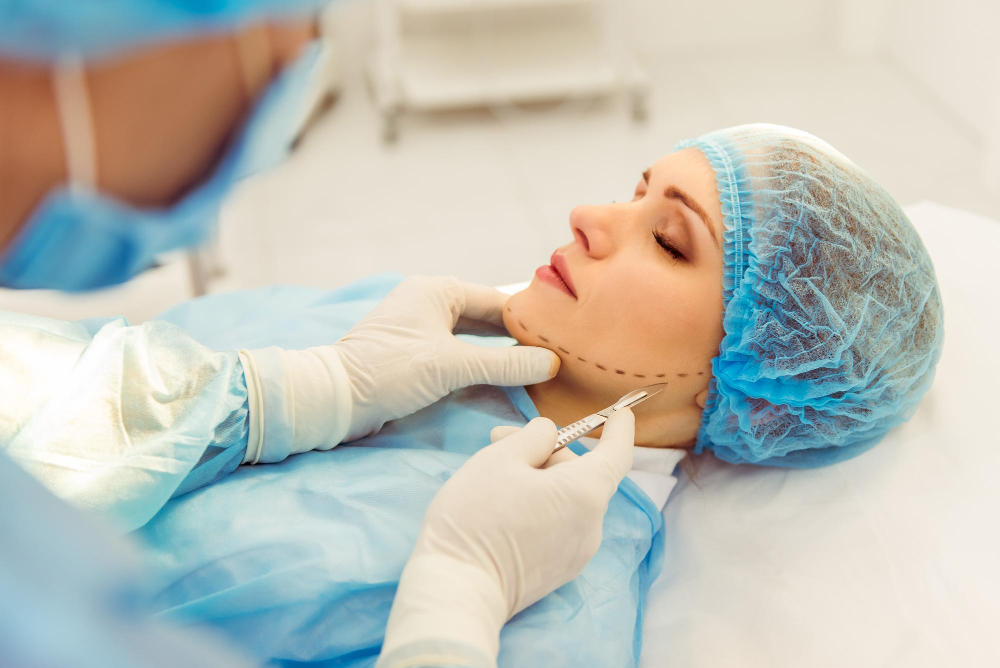Facial Reconstruction Surgery
Injuries including burns, trauma, cancer surgery and illness can have an impact on both the appearance and function of the face. The damage to facial bones and delicate tissues can cause difficulties with tasks such as blinking, smiling, speaking or eating. To improve both the function and appearance of the face, a Facial Reconstruction surgeon can reconstruct damaged structures, bringing comfort and confidence to the patient.

REPAIRING COMPLEX FACIAL INJURIES
Facial reconstructive surgery is a significant procedure that enhances the appearance and functionality of your face after a severe injury or disease. There are several reasons why patients may require reconstructive surgery. If you have experienced any one of the conditions listed below, you should contemplate undergoing facial reconstructive surgery:
- Accident
- Infection
- Disease
- Cancer
- Trauma
- Other conditions
We acknowledge the individuality of the decision to undergo reconstructive surgery. Our team of specialized surgeons are equipped to assist you in restoring what you may have lost. We will work with you to create a tailored treatment plan catering to your specific requirements.
Why is reconstruction needed?
The utilization of microsurgical reconstruction for blood vessels, muscles, skin, and bones serves the purpose of both diagnosing diverse illnesses and preserving the essential activities of affected organs. This approach facilitates the recovery of severed limbs, blood vessels, and nerve endings. The thin blood vessels are joined together through stitching.
Skin can be significantly restored through various methods. For instance, if a person suffers from burns or skin cancer on their face or other body parts such as the forearm or back, microsurgical reconstruction can help restore the damaged areas. This technique is also very helpful in repairing injuries caused by accidents or terrorist acts such as severed fingers, hands, muscles, nerves, and bones, among others. Through this approach, amputation can sometimes be avoided, and lives can be saved. In addition, titanium meshes are used in the reconstruction of the skull bones. Furthermore, this method effectively restores impaired blood supply to the bone and soft tissues.
Microsurgical reconstruction offers various forms of aid:
- Eliminates innate abnormalities in blood vessels, jaw structure, auditory organs, eyelid structure, and other types of soft tissue.
- restoration of orbital damage
- reconstruction of the pharynx
- reconstruction of the breast
- repair of the lip
- regeneration of damaged tendons
- regeneration of damaged nerves
- skin reconstruction
- nose reconstruction
- hand reconstruction
- reconstruction feet
- scalp reconstruction
- repair of heart valves and blood vessels
- regeneration of the maxillofacial area
- reconstruction of the neck
- reconstruction of the cheeks
- rehabilitation of the tongue, etc.

Types of Facial Reconstruction Surgery
The facial reconstructive procedures consist of the subsequent ones:
- Reconstructing the facial, cranial and cervical structures post-cancer surgery.
- Nasal reconstruction
- Cleft lip and palate repair
- Ear reconstruction
- Facial trauma treatment
- Facial reanimation
- Microvascular free tissue transfer
- Nose reconstruction
- Scar treatment
- The treatment for skin cancer by Mohs surgery and the subsequent restoration process post-surgery.
- Skull base surgery
How is the reconstruction carried out?
Typically, microsurgery is used to reconstruct blood vessels, bones, and soft tissue, and it is usually done with the patient under general anesthesia. This complex procedure is performed in multiple phases.
- The process of surgically removing the damaged area of a wound and preparing a healthy piece of skin to be used as a replacement.
- This procedure involves closing the affected region (such as bones, tissues, vessels, and nerves). A customized flap is then formed and moved to the damaged area.
- The process involves identifying the blood vessels to repair arteries, veins, and nerves. It includes reconnecting nerves and blood vessels through microscopic sutures to restore movement and sensation. Lastly, restoring normal blood flow is crucial.
- The final step involves the process of enhancing beauty. This requires using a microsurgical suture to stitch the edges of the wound and flap.
How long a microsurgical operation takes varies depending on how difficult the task is. Typically, these surgeries last between 2.5 and 8 hours.
Depending on the surgery’s size and type and the patient’s overall physical status after surgery, they may be discharged from the hospital within a week or two. The postoperative period is prolonged and intricate, requiring not only the patient’s but also the staff’s significant attention. After reconstruction, the patient requires thorough monitoring to detect the success of the surgery and the regular functioning of the blood vessel as soon as possible.

Recovery from Facial Reconstruction Surgery
The process of recuperating after undergoing facial reconstruction surgery can differ largely. The duration of healing is determined by several factors such as the degree of damage to the face, the individual’s age and overall health condition, their mindset and ability to endure pain, and the specific methods implemented by the surgeon.
Facial surgeons who specialize in plastic surgery aim to reduce the visibility of scars, attempting to conceal any cuts in the natural creases of the body whenever feasible. Typically, noticeable scars will eventually recover and seem like slim marks that could be lighter or darker than the adjacent skin.
It is important for an individual to have a conversation with their doctor about the recovery process prior to undergoing surgery. The doctor may provide instructions on topics such as dressing wounds, managing drainage, caring for surgical sites, physical activities, bathing, diet, sleep, and medication.
It is of utmost significance to meticulously adhere to the surgeon’s after-surgery guidelines, particularly:
- Avoiding certain activities and environments
- It is important to promptly notify your surgical team if any issues or unanticipated alterations occur, particularly if there is intense discomfort in the operative region.
- Keeping follow-up appointments
Treatment in Türkiye:
The medical staff of surgical teams, doctors and consultants in Rehab Türk can provide the best treatment options and free consultations – by striving to keep abreast of the latest medical technologies and methods.
